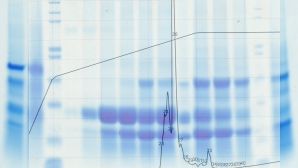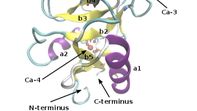Research
Scanning electron microscopy / Transmission electron microscopy
A cooperation with the institute of solid state physics facilitates the use of a scanning electron microscope (SEM: Nova 200, FEI Eindhoven, the Netherlands) and of a transmission electron microscope (TEM: FEI, TITAN 80/300, Eindhoven, the Netherlands) to investigate our specimens. With the SEM the surface of a specimen is imaged. thus this method is mainly used to investigate the morphology of samples, in our case of small calcium carbonate (CaCO3) crystals with diameters under 10μm. The resolution in the SEM is in the range of 10nm. The TEM reveals a much higher resolution of up to 0.08nm and is therefore an adequate method to analyze the crystallographic structure of the aragonite (a CaCO3 polymorph) platelets of nacre as well as of in vitro grown CaCO3 crystals. Additionally electron diffraction provides information on the crystallographic structure. The used TITAN is equipped with detectors to record energy dispersive x-ray (EDX) spectra and electron energy loss spectra (EELS) to determine the elements in the sample. Additionally electron tomography can be performed to create three dimensional models of certain specimen features. Not just crystalline specimens but also biological specimens like tissues can be investigated using TEM, but these samples require very special preparation procedures.
Author: Katharina Gries
Home-build devices
If standard equipment is not suitable for our purposes or special equipment is needed we build it. Currently our lab is equipped with a contact angle measuring device and a patented double-diffusion chamber for ... .




